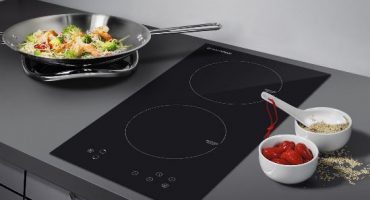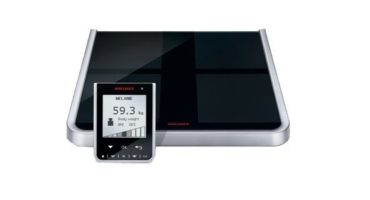Buyers usually tell at the counter in the store what size of batteries they need and where they will be used, express wishes that they are not very expensive, but work longer, and then rely on the seller, believing everything he says. In fact, learning how to choose batteries yourself is a snap.
| Category | Title | Price | Short description |
|---|---|---|---|
| Best alkaline alkaline batteries | Duracell Ultra Power AA / LR6 | 4 things. - 239 rub. | Provides long-term operation of devices with peak loads. |
| COSMOS AA LR6 | 20 pcs. - 505 rub. | It works in a wide range of temperatures. | |
| GP LR20 2 pcs Super Alkaline 13A 13A-2CR2 | 2 pcs. - 408 rub. | The capacity does not always match the declared. | |
| Best lithium electric batteries | Energizer LR06 (AA) Ultimate Lithium | 2 pcs. - 490 rub. | Large capacity, frost resistance, the ability to use in photographic equipment. |
| Ansmann Extreme Lithium AA Lithium | 2 pcs. - 269 rub. | For a long time produces a stable expression of 1.5 V. | |
| Best rechargeable electric batteries | PANASONIC Eneloop Pro AA 2450 4BP | 2 pcs. - 2190 rub. | For use in low power appliances. |
| GP Rechargeable 1000 Series AAA, Ni-Mh 950 mAh | 2 pcs. - 320 rubles | A good combination of price and quality. | |
| Li-Pol 1600 mAh Rombica NEO X2 AA | 2 pcs. - 2190 rub. | Large capacity, the ability to use in household appliances. | |
| The best cheap electric batteries | QEnerGO! AA / LR06 | 1 PC. - 7 rubles. | Characteristics superior salt at the same price. |
| R6-AA (316 cells) Panasonic | 1 PC. - 13 rub. | It can be used in devices with very low power consumption. |
Types of batteries
All power supplies can be divided into two large classes: disposable and battery.
Disposable
It is a chemical source of electricity that does not require pre-charging. It consists of three main parts - the positive (anode) and negative (cathode) electrodes and electrolyte. Anode - zinc powder and a core made of brass, connected to the minus terminal on the body. The cathode is a mixture of manganese dioxide and coal powder. Under the influence of an electrolyte, a chemical reaction occurs in the anode with the formation of electrons. If the element is included in the electrical network, for example, by inserting it into a flashlight, the movement of electrons between the electrodes will begin and current will appear. It will flow until all of the zinc in the anode is recycled and the chemical reaction stops.
Rechargeable
Their design also has an anode and a cathode immersed in an electrolyte. Under load, the battery works the same as a one-time, generating current. However, after it stops giving electricity, it can be charged. If the battery is connected via a special charger to the mains, chemical reactions will begin. As a result, the materials of the anode and cathode are restored to their initial state, and the battery can again generate an electric current. The number of charge / discharge cycles for different types of batteries can be up to 1000.
Attention! The cost of rechargeable batteries is several times higher than disposable ones. The reason is the use of expensive rare earth metals and a more complex structure.
The choice between these types of power sources depends on the conditions in which they will be used. Batteries are disadvantageous to use in low-power devices: remote controls, home weather stations, thermometers, etc. Batteries will run out quickly and need to be removed often to charge. In this case, disposable models will be the right purchase.
If the appliance consumes a lot of energy, then here, on the contrary, the acquisition of disposable sources of electricity will be unprofitable.
Types and sizes of batteries
All disposable sources of electricity, depending on the materials of the anode, cathode and electrolyte, can be divided into salt, alkaline and lithium.
Saline
Appear at the beginning of the 20th century. In them, a solution of ammonium chloride acts as an electrolyte. Electrodes are made of zinc and manganese oxide. These substances are not rare, the production technology has been developed, so the batteries go on sale at a low price. However, they have numerous shortcomings, regardless of which company produces them. They are used in devices with low power consumption: thermometers, remote controls, scales, etc.
Advantages: low price.
Disadvantages:
- during operation, the output voltage decreases;
- low capacity;
- sensitivity to freezing temperatures;
- large self-discharge, up to 30-40% per year, which is why the shelf life is not more than 2 years.
Alkaline
Invented in the middle of the 20th century. The electrodes are made of zinc and manganese dioxide, as well as in the salt element. The alkali acts as an electrolyte - potassium hydroxide, hence the name. Often such models are called alkaline, from the English alkaline - alkali.
The most popular type of disposable power supplies. They have good technical specifications. They can work in devices with high energy consumption: children's toys, players, cameras, etc. Surpass salt in a number of indicators:
- 1.5-2 times higher capacity;
- voltage generated current evenly throughout the work;
- 5 times longer storage period;
- less sensitive to freezing temperatures.
However, alkaline batteries have disadvantages:
- the price is 4-5 times higher than that of salt;
- a significant reduction in electrical intensity when used in electrical appliances requiring short-term current pulses of high strength, for example, to flash the camera.
Lithium
The most advanced at the present stage of technology development are disposable power supplies. Able to provide energy-intensive devices for a long time. The cathode is made of lithium, isolated from the anode by a special separator impregnated with an electrolyte. The design is quite complicated, but manufacturers increase their output, since these batteries have the largest electric capacity among the rest.
Advantages:
- capacity 2 times the capacity of alkaline elements;
- constant voltage during the whole operation time;
- 12-15 year shelf life without loss of capacity:
- operating temperature range from - 40 to + 50 gr. WITH.
The main drawback is the price. They are 5 times more expensive than alkaline.
There are two more types of disposable batteries: mercury and silver. However, environmental damage led to an almost complete rejection of the release of batteries that used mercury. The scope of use of silver batteries is very narrow - they are used as a watch battery, and the description of their technical data is beyond the scope of this article.
Depending on the materials used, several types of batteries are distinguished.
Nickel Cadmium Batteries (NiCd)
Invented in the middle of the 20th century. Thanks to reliability and proven technology, it is still quite common. Recently, due to stricter environmental requirements, output has been declining.
Advantages:
- wide range of operating temperatures;
- can produce a significant current in a pulse;
- more than 1000 charge / discharge cycles;
- long shelf life;
- reasonable price.
Disadvantages:
- memory effect;
- self-discharge reaches 10% per day;
- harm to the environment.
Nickel Metal Hydride Batteries (NiMH)
Developed in the 80s of the 20th century to replace nickel-cadmium batteries as less toxic.
Advantages:
- have 30% more capacity than NiCd batteries;
- no memory effect;
- less toxic.
Disadvantages:
- 2 times less number of discharge / charge cycles compared to NiCd;
- 2 times more self-discharge.
Lithium-ion batteries (Li-ion) 1, 5 V
Recently, batteries have been equipped with built-in converters that reduce the output voltage of a Li-ion battery from 4.2 V to 1.5 V. This makes it possible to use them in most household appliances. It is a good substitute for alkaline and even lithium cells, since the batteries emit a stable voltage until they are completely discharged and can generate a large current if necessary.
Advantages:
- capacity 2 times more than NiCd batteries;
- shelf life of 10-12 years in a charged state;
- operating temperature range from -20 to + 50 ° С;
- more than 3000 discharge / charge cycles;
- does not need special maintenance.
The disadvantages include:
- aging effect of idle batteries;
- failure during deep discharge;
- high price;
- the need for a special charger;
- explosion hazard of some models.
The development of engineering and technology has led to the fact that now all over the world the same standard sizes of batteries are used, regardless of the country in which they are manufactured.
Several battery classification systems are known for their size. The most popular now is the American ANSI standard.
The most popular sizes received their own, household names: AAA batteries are called pinky batteries, AA - finger-type, D-barrel, 3336 - flat, PP3 - crown.
Other systems, including the Russian GOST, are less common. Knowing the “Gostovskiy” standard is not out of place, since often in the instructions for military, scientific, medical, and even domestic appliances of domestic production, the names of the elements are provided in accordance with GOST.
Conformity table of domestic and international names
Finger batteries are currently the most sought after on the market. This is facilitated by the abundance of all kinds of electrical appliances in which this standard size is used. It is the most convenient and versatile.
Best alkaline alkaline batteries
Before presenting a rating of power sources, it is necessary to explain in what ways the best batteries are identified and whether these results can be trusted. As a rule, numerous tests are carried out for this, which consists of two stages. At the first, the power source is discharged under load, simulating the continuous operation of an electrical appliance. For example, a flashlight.
During the second stage, the electric battery is periodically subjected to a short-time discharge by a current of sufficiently high strength, such as, for example, during a flash of a camera.
And in the first and second case, the time is recorded until the output voltage drops below 1 V. For objectivity, 2-3 power sources of each manufacturer are checked.
Duracell Ultra Power AA / LR6
General characteristics:
- Size AA.
- The technology is alkaline.
- Operating voltage 1.5 V.
The cost of 4 pcs. 239 rub
Advantages: provides long-term operation of devices with peak loads. With a uniform load, it shows one of the best results among alkaline elements.
Disadvantages: high price.
Conclusions: a good solution for those who want to get the maximum result.
COSMOS AA LR6
General characteristics:
- Size AA
- Alkaline technology
- Operating voltage 1.5 V
Cost 20 pcs. 405 rub
Advantages: Works in a wide range of temperatures. Long service life. Shelf life up to 7 years
Disadvantages: the packaging contains very discharged elements.
Conclusions: a good and inexpensive alkaline power source that meets the stated specifications.
GP LR20 2 pcs Super Alkaline 13A 13A-2CR2
General characteristics:
- Size C
- Alkaline technology
- Capacity 7300 mAh
- Working voltage
- 1.5 V
The cost of 2pcs. 408 rub
Advantages: long work, good quality.
Disadvantages: the capacity does not always correspond to the declared one.
Conclusions: the best combination of price and quality.
Best lithium electric batteries
Energizer LR06 (AA) Ultimate Lithium
General characteristics:
- Size AA
- Lithium technology
- Working voltage
- 1.5 V
The cost of 2pcs.490 rub
Advantages: large capacity, frost resistance, the ability to use in photographic equipment.
Disadvantages: price, it gets very hot under load.
Conclusions: the acquisition is economically justified when used in energy-intensive devices, especially in flash cameras. In other cases, the acquisition may be impractical.
Ansmann Extreme Lithium AA Lithium
General characteristics:
- Size AA
- Lithium technology
- Working voltage
- 1.5 V
The cost of 2 pcs. 269 rub
Advantages: fairly low price, frost resistance, low weight.
Disadvantages: under load it can become very hot.
Conclusions: can be used in photographic equipment, in children's toys. For a long time produces a stable expression of 1.5 V.
Best rechargeable electric batteries
PANASONIC Eneloop Pro AA 2450 4BP
General characteristics:
- Size AA
- NiMH Technology
- Capacity 2450 mAh
- Voltage 1.2V
The cost of 4 pcs. 2190 rub.
Advantages: high capacity, low self-discharge, frost resistance, lack of memory effect.
Disadvantages: high price, exactingness for the charger.
Conclusions: an excellent choice for energy-intensive equipment, especially photographic equipment. For use in low power appliances.
GP Rechargeable 1000 Series AAA, Ni-Mh 950 mAh
General characteristics:
- Size AAA
- NiMH Technology
- Capacity 950 mAh
- Voltage 1.2V
The cost of 2pcs. 320 rub
Advantages: good capacity, frost resistance, lack of memory effect, reasonable price.
Disadvantages: high enough self-discharge /
Conclusions: a good combination of price and quality.
Li-Pol 1600 mAh Rombica NEO X2 AA
General characteristics:
- Size AA
- Li-Pol Technology
- Operating voltage 1.5 V
- Capacity 1600 mAh
The cost of 2 pcs. 1290 rub
Advantages: large capacity, the possibility of use in household appliances, up to 3000 charge / discharge cycles.
Disadvantages: a voltage converter may fail, the need to purchase a special charger, high price.
Conclusions: a good replacement for non-rechargeable cells.
The best cheap electric batteries
QEnerGO! AA / LR06
- General characteristics:
- Size AA
- Alkaline technology
- Operating voltage 1.5 V
The cost of 1 pc. 7 rub
Advantages: the price is at the salt level.
Disadvantages: very rarefied specimens are found in the packaging.
Conclusions: a very inexpensive alkaline power source. Characteristics superior salt at the same price.
R6-AA (316 cells) Panasonic
General characteristics:
- Size AA
- Salt technology
- Operating voltage 1.5 V
The cost of 1 pc. 13 rub
Advantages: low price.
Disadvantages: limited shelf life, insufficient capacity, sensitivity to freezing temperatures.
Conclusions: can be used in devices with very low power consumption, operating in conditions of positive temperatures.
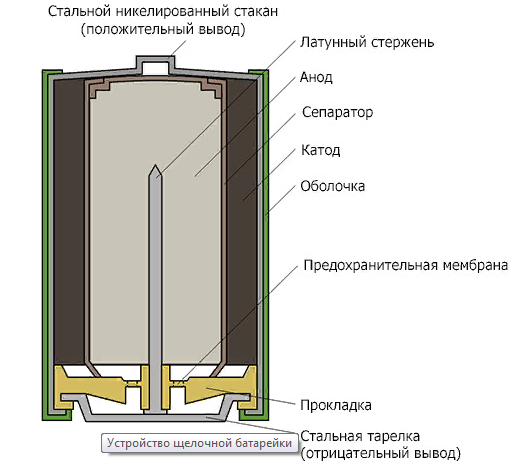


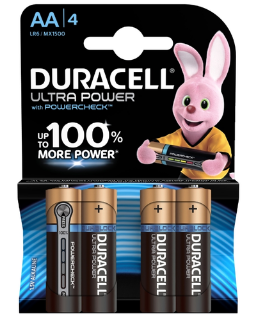
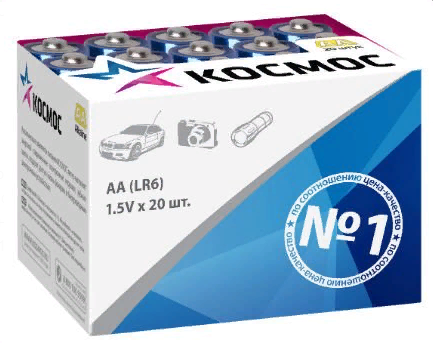
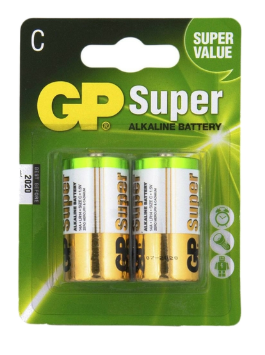
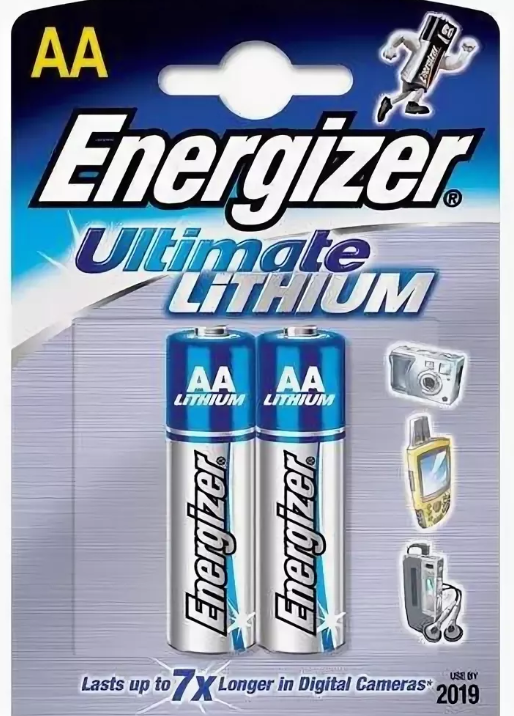
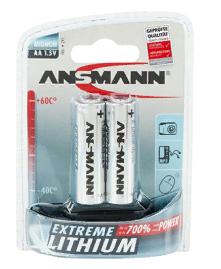
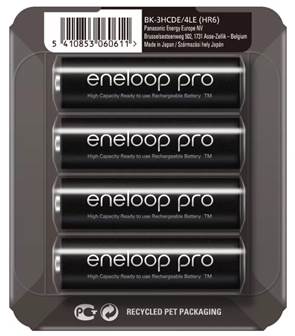
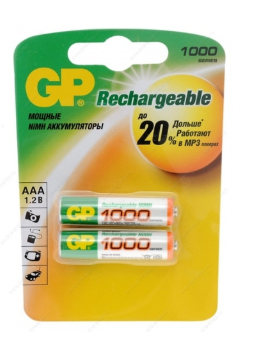
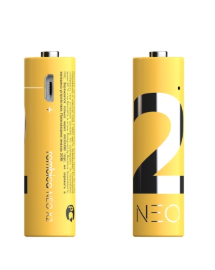
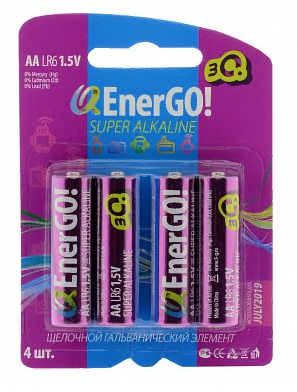
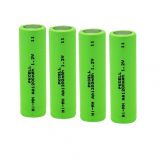 Ni mh
Ni mh 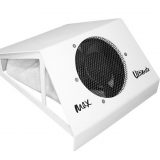 Max ultimate
Max ultimate 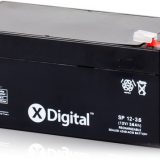 Batteries types and types
Batteries types and types 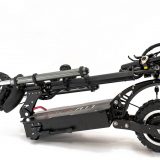 Top 5 best off-road electric scooters
Top 5 best off-road electric scooters 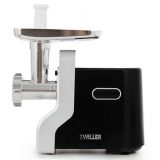 TOP-5 electric meat grinder 2020
TOP-5 electric meat grinder 2020 